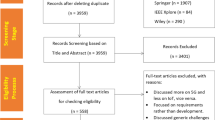Abstract
This paper presents an extensive overview of the challenges that arise when testing large IoT applications at the system level. In order do that we start from analyzing behavior of local entities such as IoT devices or people interacting with the IoT system. The interactions of these local entities eventually leads to an emergent behavior. Both the emergent behavior and the local behavior need to be taken into account when testing IoT systems. Therefore, we present a novel hybrid simulation based testing approach that is able to effectively facilitate interactions of these local entities. Furthermore, we introduce various solutions to the challenges that arise when implementing this hybrid methodology. These challenges are mainly related to the IoT development pipeline, synchronization between real-life and simulation environment and the scalability constraints of modern simulation techniques.





Similar content being viewed by others
References
Arora A, Ertin E, Ramnath R, Nesterenko M, Leal W (2006) Kansei: a high-fidelity sensing testbed. IEEE Internet Comput 10(2):35–47
Beizer B (1995) Black-box testing: techniques for functional testing of software and systems. Wiley, Hoboken
Bertolino A (2007) Software testing research: achievements, challenges, dreams. In: 2007 Future of software engineering. IEEE Computer Society, pp 85–103
Bononi L, Bracuto M, D’Angelo G, Donatiello L (2006) Proximity detection in distributed simulation of wireless mobile systems. In: Proceedings of the 9th ACM international symposium on modeling analysis and simulation of wireless and mobile systems. ACM, pp 44–51
Bormann C, Castellani AP, Shelby Z (2012) Coap: an application protocol for billions of tiny internet nodes. IEEE Internet Comput 16(2):62–67
Bosmans S, Mercelis S, Hellinckx P, Denil J (2018) Towards evaluating emergent behavior of the internet of things using large scale simulation techniques (wip). In: Proceedings of the theory of modeling and simulation symposium. Society for Computer Simulation International, p 4
Carneiro G (2010) Ns-3: network simulator 3. In: UTM Lab Meeting, vol 20
Caughlin D, Sisti AF (1997) Summary of model abstraction techniques. Enabling Technol Simul Sci Int Soc Opt Photon 3083:2–14
Crisan DA, Radoi IE, Arvind D (2013) Coap-mediated hybrid simulation and visualisation environment for specknets. In: Proceedings of the 1st ACM sigsim conference on principles of advanced discrete simulation. ACM, pp 285–294
DAngelo G (2017) The simulation model partitioning problem: an adaptive solution based on self-clustering. Simul Model Pract Theory 70:1–20
D’Angelo G, Ferretti S, Ghini V (2016) Simulation of the internet of things. In: High performance computing & simulation (HPCS), 2016 International conference on IEEE, pp 1–8
Dunkels A, Gronvall B, Voigt T (2004) Contiki-a lightweight and flexible operating system for tiny networked sensors. In: Local computer networks, 2004. 29th Annual IEEE international conference. IEEE, pp 455–462
Fortino G, Gravina R, Russo W, Savaglio C (2017) Modeling and simulating internet-of-things systems: a hybrid agent-oriented approach. Comput Sci Eng 19(5):68–76
Frantz FK (1995) A taxonomy of model abstraction techniques. In: Proceedings of the 27th conference on winter simulation. IEEE Computer Society, pp 1413–1420
Fujimoto RM (2000) Parallel and distributed simulation systems, vol 300. Wiley, New York
Gupta H, Vahid Dastjerdi A, Ghosh SK, Buyya R (2017) iFogSim: A toolkit for modeling and simulation of resource management techniques in the internet of things, edge and fog computing environments. Software: Pract Exp 47(9):1275–1296
Hunkeler U, Truong HL, Stanford-Clark A (2008) Mqtt-sa publish/subscribe protocol for wireless sensor networks. In: Communication systems software and middleware and workshops, 2008. Comsware 2008. 3rd International conference on IEEE, pp 791–798
Latre S, Leroux P, Coenen T, Braem B, Ballon P, Demeester P (2016) City of things: an integrated and multi-technology testbed for iot smart city experiments. In: Smart cities conference (ISC2), 2016 IEEE international. IEEE, pp 1–8
Levis P, Lee N, Welsh M, Culler D (2003) TOSSIM: accurate and scalable simulation of entire tinyOS applications. In: Proceedings of the 1st international conference on embedded networked sensor systems. ACM, pp 126–137
Marjanović M, Antonić A, Žarko IP (2018) Edge computing architecture for mobile crowdsensing. IEEE Access 6:10662–10674
Mataric MJ (1993) Designing emergent behaviors: from local interactions to collective intelligence. In: Proceedings of the 2nd international conference on simulation of adaptive behavior
Murray JA, Sasani M, Shao X (2015) Hybrid simulation for system-level structural response. Eng Struct 103:228–238
Nunes DS, Zhang P, Silva JS (2015) A survey on human-in-the-loop applications towards an internet of all. IEEE Commun Surv Tutor 17(2):944–965
Roca D, Nemirovsky D, Nemirovsky M, Milito R, Valero M (2016) Emergent behaviors in the internet of things: the ultimate ultra-large-scale system. IEEE Micro 36(6):36–44
Rodriguez JD, Bauer Jr KW, Miller JO, Neher Jr RE (2008) Building prediction models of large hierarchical simulation models with artificial neural networks and other statistical techniques. In: Visual information processing XVII, vol 6978. International Society for Optics and Photonics, p 69780
Sanchez L, Muñoz L, Galache JA, Sotres P, Santana JR, Gutierrez V (2014) Smartsantander: Iot experimentation over a smart city testbed. Comput Netw 61:217–238
Van Tendeloo Y, Vangheluwe H (2014) Activity in pythonpdevs. In: ITM Web of conferences, vol 3. EDP Sciences, p 01002
Varga A, Hornig R (2008) An overview of the omnet++ simulation environment. In: Proceedings of the 1st international conference on simulation tools and techniques for communications, networks and systems & workshops, ICST (Institute for Computer Sciences, Social-Informatics and Telecommunications Engineering), p 60
Acknowledgements
SeRGIo is a project realized in collaboration with imec. Project partners are bpost, imec, Joyn and Nokia Bell Labs, with project support from VLAIO (Flanders Innovation & Entrepreneurship).
Author information
Authors and Affiliations
Corresponding author
Rights and permissions
About this article
Cite this article
Bosmans, S., Mercelis, S., Denil, J. et al. Testing IoT systems using a hybrid simulation based testing approach. Computing 101, 857–872 (2019). https://doi.org/10.1007/s00607-018-0650-5
Received:
Accepted:
Published:
Issue Date:
DOI: https://doi.org/10.1007/s00607-018-0650-5




